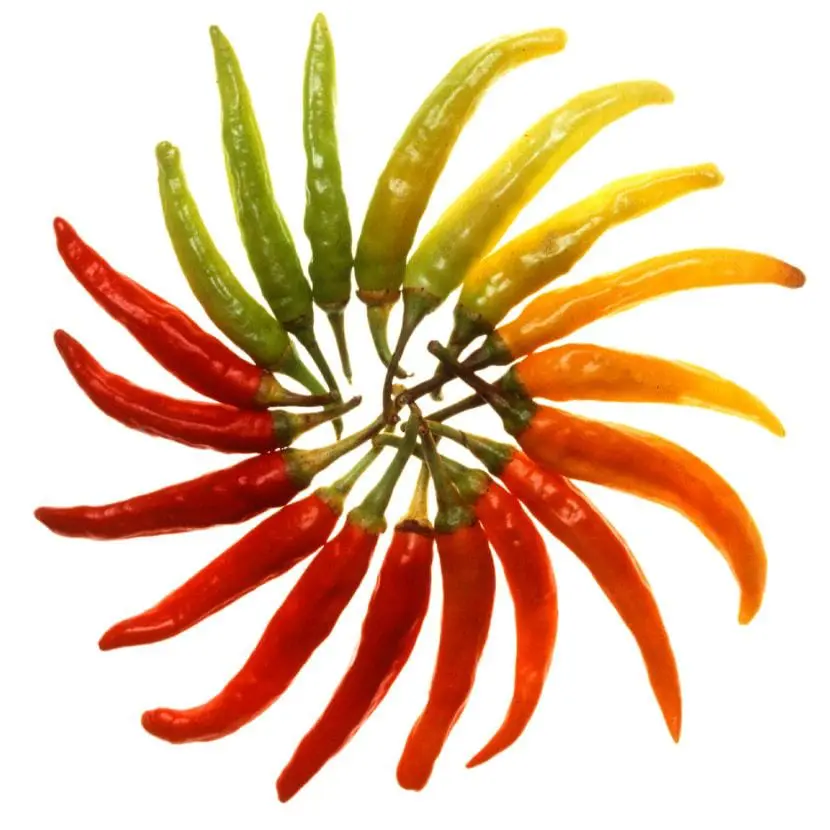They are said to have a pungent taste that some find very unpleasant, but others love them nonetheless. I’m talking about chili peppers , which are closely related to bell peppers. In fact, they are from the same family and genus. They are distributed mainly in South America, in tropical areas where winters are warm and there is no risk of frost. Hot peppers – that’s what I call them – are annual plants, just like the rest of the peppers. But the good news is that cultivars behave like perennials if weather conditions are favourable.
Would you like to know how to grow chili peppers ? We tell you below.
Chili peppers are plants that can live in a pot. In fact, it is something that we recommend, since this way you can give them the growing conditions they need without having to worry too much about the weather if it is cool. You can sow the seeds towards the end of winter indoors, or buy the plants already grown in spring and/or summer.
To protect them from the cold, you should keep them indoors as soon as the temperature drops below ten degrees. Remember that they come from tropical climates, and that a temperature below ten degrees can be fatal. Indoors we make sure that it can at least grow well into winter.
Here is a selection of chili peppers that we think we should try:
Index
- 1 Chilli ‘Basket of Fire’
- 2 Chilli F1 ‘Apache’
- 3 Chilli ‘Joe Super Long’
- 4 Chilli ‘Peruvian Lemon Drop’
- 5 Chilli ‘Piri-piri’
- 6 More growing tips
Chilli ‘Basket of Fire’

The ideal chili to have in a hanging pot, on a table decorating the patio or terrace, … anywhere! They are compact plants, with abundant foliage, that produce a large number of fruits that range from purple, through cream and orange to bright red.
They are resistant to colder weather, so you will have fruit practically all year round.
Chilli F1 ‘Apache’

These plants with compact, emerald-green leaves bear copious amounts of glossy fruit that ripen from green to red. A very reliable variety for an F1 hybrid.
Chilli ‘Joe Super Long’

This chili plant grows to a height of approximately 90cm in a large pot. It produces long, thin fruits that range from green to deep red. They are very good for drying.
Chilli ‘Peruvian Lemon Drop’

Incredible as it may seem, it is a chili that has the same color as the lemon. The fruits range from green to yellow. Good to have on a sunny patio, but will do better in a greenhouse.
Chilli ‘Piri-piri’

Plant that can grow to a height of approximately 60cm, but most often it does not exceed 30cm. This chili is used to make the sauce known as the “piri-piri sauce”. It is delicious if we combine it with chicken and shrimp.
More growing tips

We think the chillies will do best in individual terracotta pots if grown outdoors. Otherwise, in portable cultivation tables to be able to move them to a warmer place come autumn. The pot will have to measure a minimum of 30cm in diameter so that it can develop well. It is important to use a specific substrate for the garden or, failing that, one that has many nutrients. As soon as the peppers begin to flower, they can be fertilized weekly with an ecological and/or organic fertilizer to ensure a good harvest. To attract pollination and make the pot more attractive, they can be planted together with nasturtiums, marigolds and, of course, basil. Do not forget to place it in full sun and water abundantly so that the plants grow strong and healthy.
You have to be attentive to pests, especially mites, mealybugs, aphids. Remember that prevention is the best remedy, so we recommend that you spray the chili plant with an ecological insecticide once or twice a week.
Go reaping the fruits regularly. An excess of fruit on the plant will slow down fruit production.
Have a lot of fun growing your own chilies and… have a good harvest!
